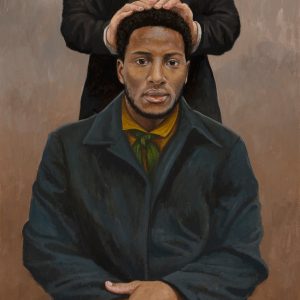Race, Temple, and Priesthood
7 Episodes
There was a season in our church’s history when members with Black African ancestry were unevenly barred from both priesthood and temple privileges. This overtly discriminatory practice is one of the most challenging aspects of our history, and for many is one of the most difficult to understand. In this series Scott and Casey explore the racial context of the United States at the time of the church’s restoration, the inclusive practices at the beginning of the church, the exclusive practices and official ban that was instituted later, and the eventual overturning of the ban.

Art Credit: Anthony Sweat
Episodes
Episode 1
The Racist American Context the Church was Born Into
There was a season in our church’s history when members with Black African ancestry were unevenly barred from both priesthood and temple privileges. This overtly discriminatory practice is one of the most challenging aspects of our history, and for many is one of the most difficult to understand. How could something like this happen in a church led by living prophets and apostles? It’s a fair question, and the truth is …
50 Min
Episode 2
Joseph Smith and Black Africans
In the broader American culture in which Joseph Smith lived and led the growing church of Jesus Christ, white attitudes and beliefs about the inferiority of Black Africans dominated the scene. In this pre-Civil-War context, exactly half of the states in the union had legalized slavery and built their economies on it, while the other half opposed slavery. Yet fears were shared on both sides about what might …
48 Min
Episode 3
1852 and The Beginnings of the Priesthood-Temple Ban in the Church
The historical record shows that Joseph Smith did not implement or endorse any practices or policies which specifically prevented church members with black African ancestry from fully participating in priesthood offices or temple worship. But in 1847, only three years after Joseph’s death, attitudes and teachings of some church leaders began to shift away from full inclusion of blacks to partial exclusion until, only five years …
63 Min
Episode 4
How the Priesthood-Temple Ban Became Fully Entrenched Policy in the Church
Once people come to terms with the uncomfortable idea that Brigham Young committed an error in endorsing a priesthood ban on church members with black African ancestry, a puzzling question naturally follows: if the ban was an error, then why didn’t it get corrected earlier than 1978? There were nine church presidents between Brigham Young and Spencer W. Kimball, and 101 years between President Young’s …
52 Min
Episode 5
Was the Racial Ban Church Policy or Doctrine? Setting the Stage for a Revelation (from 1908-1978)
In 1907, the First Presidency codified the church’s official policy about black African participation in both priesthood and temple, declaring that “No one known to have in his veins Negro blood, it matters not how remote a degree, can either have the priesthood in any degree or the blessings of the temple of God, no matter how otherwise worthy he may be.” By contrast, in 2020, church president Russell M. Nelson reminded all church members that “Your standing …
43 Min
Episode 6
The 1978 Revelation of Reversion and Repair
Paul Reeve recently wrote, “In June 1978 President Spencer W. Kimball received a revelation which returned the church to its universal roots and restored what was lost: priesthood and temple admission to people of African descent. This did not mark something new as much as it reestablished a commitment to the founding principles of the restoration. It reconfirmed the church’s original universalism: that the human family in all of its diversity is equal in God’s sight, …
57 Min
Episode 7
Q&R! Tough Questions with Paul Reeve
Some people see a connection between the church’s past restrictive policy toward blacks in the church and the church’s current restrictive policy towards gays in the church, specifically prohibiting gay temple marriage. In what ways are these two issues similar, and in what ways are they different? How can church members reconcile A, the teaching that the prophet won’t ever lead the church astray, with B, the fact that church presidents for over a century taught false …
